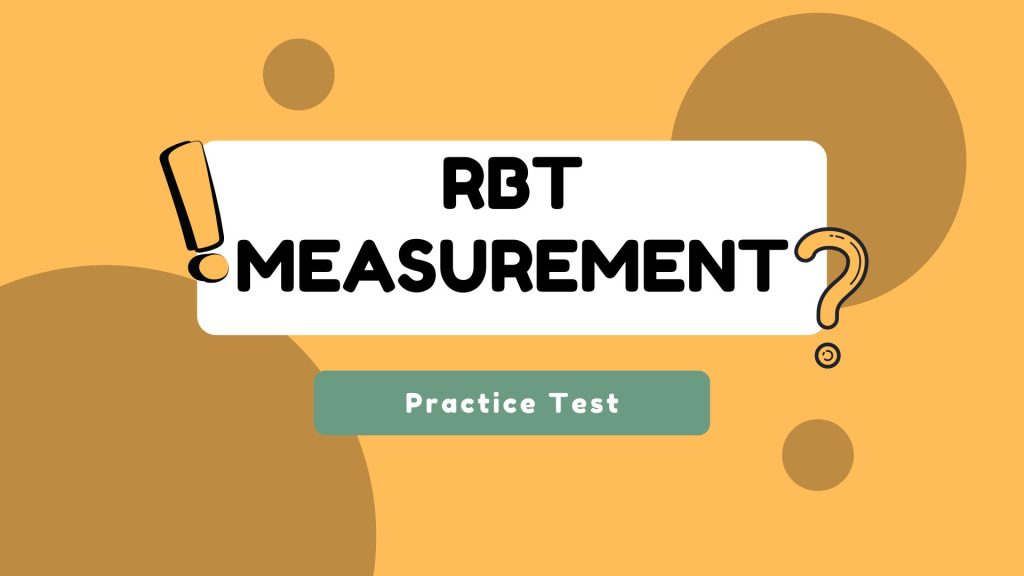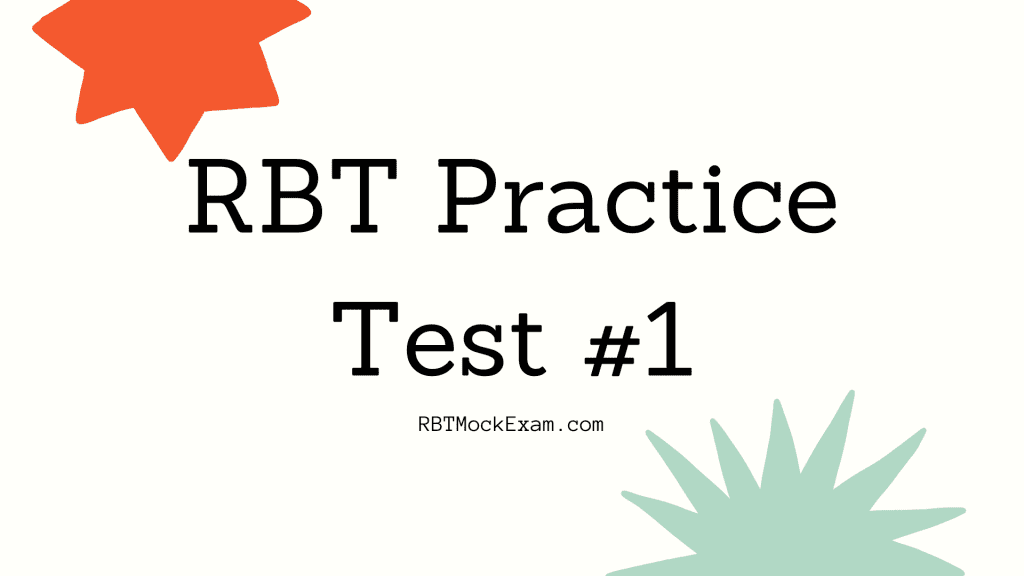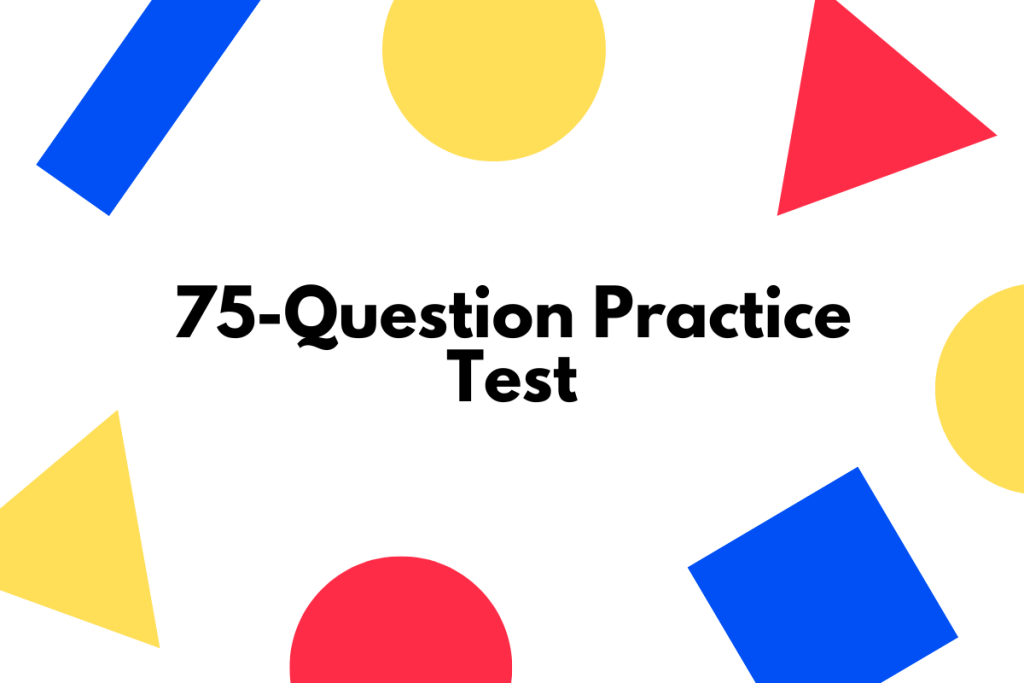This practice test is designed to help you prepare for the Measurement section of the Registered Behavior Technician (RBT) exam. The RBT exam is based on the RBT Task List (2nd ed.), which outlines the core competencies and skills required of an RBT.
Results
Congratulations! You Passed the Measurement Section of the RBT Practice Test!
Your understanding of measurement in applied behavior analysis is solid, and you have demonstrated proficiency in key competencies required for an RBT.
Unfortunately, You Did Not Pass the Measurement Section of the RBT Practice Test
Don’t be discouraged—this is an opportunity to identify areas for improvement and strengthen your understanding of measurement in applied behavior analysis. Here’s a summary of where you need to focus:
- Purpose of Measurement: Review the primary purpose of measurement in ABA, emphasizing its role in guiding empirical decision-making.
- Measurement Procedures: Spend time understanding different measurement procedures, particularly distinguishing between continuous (e.g., duration, frequency) and discontinuous (e.g., interval recording) methods.
- Interobserver Agreement (IOA): Learn more about IOA, why it’s important, and the various methods to calculate it. Consistency between observers is crucial for reliable data.
- Graphing and Data Analysis: Practice using graphs to display data. Understanding how to analyze data trends over time is essential for monitoring and adjusting behavior interventions.
- Operational Definitions: Work on creating clear and precise operational definitions for behaviors to ensure consistent and accurate measurement across different observers.
#1. RBT’s must _____________ for data collection.
RBTs must prepare thoroughly for data collection to ensure accuracy and consistency in the data gathered during sessions.
#2. Consequence is what happens ________________ the behavior.
A consequence is the event or condition that follows a behavior and can influence whether the behavior will occur again in the future.
#3. What does latency measure in the context of ABA?
Latency measures the time from the presentation of a stimulus to the beginning of the response.
#4. Which is an example of a discontinuous measurement procedure?
Partial interval recording is a discontinuous measurement procedure as it does not capture every instance of the behavior.
#5. What is the primary purpose of measurement in applied behavior analysis?
Measurement in applied behavior analysis is crucial for collecting data that informs and guides intervention decisions.
#6. Continuous measurement involves _____________ instances of a response class being detected.
Continuous measurement requires that all instances of a specified response class are detected and recorded, providing a complete account of the behavior.
#7. Behavior is the ________________________.
Behavior refers to the specific actions or responses made by an individual that can be observed and measured.
#8. What is interobserver agreement (IOA)?
IOA is a measure of the consistency between different observers’ data.
#9. What is the purpose of using operational definitions in measurement?
Operational definitions provide clear and precise descriptions of behaviors, ensuring consistent understanding and measurement across observers.
#10. RBT tasks are to ________________ data on _______________ and __________.
The primary tasks of an RBT include collecting data on both skills and behavior to monitor and assess client progress.
#11. Antecedent is what happens ______________ the behavior.
An antecedent refers to the event or condition that occurs immediately before a behavior, setting the stage for the behavior to occur.
#12. When should data be collected during an ABA session?
Data should be collected throughout the session to capture accurate and comprehensive information about the behavior.
#13. If a behavior occurs very frequently, which recording method might be the most practical?
Interval recording can be more practical for high-frequency behaviors as it allows for sampling behavior at specific intervals rather than continuously.
#14. What is the purpose of using a graph in ABA?
Graphs are used in ABA to visually display and analyze data trends over time.
#15. Which measurement procedure is best for recording the number of times a behavior occurs?
Frequency is a measurement procedure used to count the number of times a behavior occurs.
#16. The supervisor will tell you which _________________________ method to use.
The supervisor will specify the appropriate data collection method to use based on the behavior or skill being measured, ensuring that the data is relevant and useful for analysis.
#17. Which type of graph is commonly used to display data in ABA?
Line graphs are commonly used in ABA to display data points over time, showing trends and patterns.
#18. Measurement consists of __________________ and __________________.
Measurement in applied behavior analysis involves the systematic process of collecting data and graphing it to analyze and interpret behavior patterns.
#19. Which of the following is a continuous measurement procedure?
Duration is a continuous measurement procedure that involves recording the total amount of time a behavior occurs.
#20. Which of the following is NOT a method for calculating IOA?
Statistical significance tests are not methods used for calculating interobserver agreement in ABA.
Measurement is a critical component of applied behavior analysis (ABA) as it systematically collects and analyzes data to inform decision-making and guide interventions. Mastering measurement skills is essential for effective behavior assessment, intervention planning, and progress monitoring.
Content Areas Covered:
- Purpose of Measurement: Understanding why measurement is essential in ABA.
- Measurement Procedures: Familiarity with both continuous and discontinuous measurement methods.
- Interobserver Agreement (IOA): Ensuring consistency and reliability in data collection.
- Graphing and Data Analysis: Utilizing graphs to display and interpret data trends.
- Operational Definitions: Creating clear and precise behavioral definitions to ensure accurate measurement.
Test Instructions:
- Read each question carefully and select the best answer from the provided options.
- There are 12 questions in this section, reflecting the importance of measurement in the RBT exam.
- Take your time to ensure you understand each concept and its application.
Completing this practice test will reinforce your knowledge of measurement in ABA and help you better prepare for the RBT exam. Good luck!







